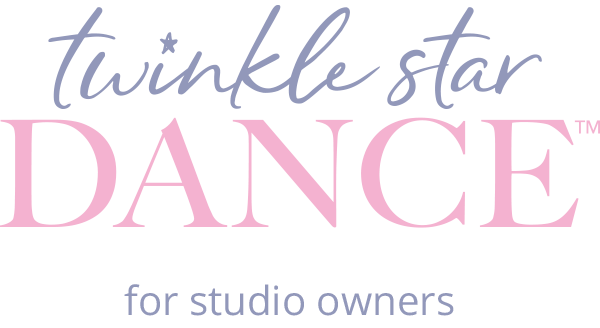Dance has profound long-term effects on children's self-esteem, creating benefits that extend well beyond the studio and into adulthood.
Research indicates that dance education helps children develop a positive body image that can counteract negative self-perception trends seen in adulthood. Studies show that as many as 90% of adults are unhappy with their physique, but children who dance develop stronger satisfaction with their self-image through increased strength, mobility, and flexibility[6].
A 16-week dance intervention study demonstrated significant improvements in self-esteem among participants, with measurable increases in self-esteem scores using Rosenberg's Self-Esteem Scale[7]. These benefits weren't temporary - the structured nature of dance education builds lasting confidence as children master increasingly complex routines and overcome challenges.
Dance also cultivates emotional intelligence and self-expression skills that contribute to long-term self-esteem. By learning to communicate complex emotions non-verbally, children develop deeper emotional awareness and resilience[1]. This emotional exploration enhances interpersonal skills and provides tools for navigating complex emotional landscapes throughout life.
The performance aspect of dance helps children overcome stage fright and develop public speaking confidence, addressing one of the most common adult anxieties[6]. Regular performances build a comfort with public presentation that transfers to many professional and personal situations in adulthood.
Additionally, dance fosters problem-solving abilities through progressively challenging choreography. As noted by Queen City Dance, "Just as they were able to overcome the dance challenges they faced in class, they will be able to approach the obstacles they face outside of the classroom in the same fashion"[6]. This creates a foundation for confidence when facing life's challenges.
The social connections formed through dance also contribute to lasting self-esteem. Group performances teach children that their contributions are valuable and essential to the team's success[2], building a sense of belonging and social confidence that extends beyond the dance floor.
Sources
[1] The Science of Dance: Cognitive & Emotional Benefits for Kids http://www.dancedynamicslv.com/dd-blog/dance-cognitive-emotional-benefits-kids
[2] How Dance Can Boost Confidence and Self-Esteem in Kids https://www.sharonsdance.com/post/how-dance-can-boost-confidence-and-self-esteem-in-kids
[3] How Dance Boosts Confidence and Self-Esteem in Children https://www.klingerdance.com/articles-press/how-dance-boosts-confidence-and-self-esteem-in-children
[4] Dance And Early Childhood Development- How They Are Interlinked? https://www.morethandancers.com/posts/dance-and-early-childhood-development--how-they-are-interlinked
[5] The Effect of Providing Creative Dance Education on Early ... https://pusdikra-publishing.com/index.php/jsr/article/view/1927
[6] How Dance Helps Build Confidence In Children https://queencity.dance/blog/how-dance-helps-build-confidence/
[7] Effects of a 16-week dance intervention on loneliness and self ... https://pmc.ncbi.nlm.nih.gov/articles/PMC11762727/
[8] Benefits of Dance for Kids - Pinnacle Gymnastics https://www.pinngym.com/benefits-of-dance-for-kids
[9] DANCING AND SELF-ESTEEM IN CHILDREN - Unified Dance Studio https://unified.dance/dancing-and-self-esteem-in-children/
[10] The Physiological and Psychological Benefits of Dance and its ... https://pmc.ncbi.nlm.nih.gov/articles/PMC9234256/
[11] [PDF] Creative Dance: Can It Improve the Self-confidence of Early ... https://www.scitepress.org/Papers/2019/89951/89951.pdf
[12] How Dance Classes Boost Confidence & Self-Esteem in Children https://www.nansdancenc.com/blog/how-dance-classes-boost-confidence-self-esteem-in-children/
[13] [PDF] the effects of dance on self-esteem and body-image https://digitalcommons.pepperdine.edu/cgi/viewcontent.cgi?article=1349&context=etd
[14] Effects of Dance Interventions on Aspects of the Participants' Self https://pmc.ncbi.nlm.nih.gov/articles/PMC6056677/
[15] [PDF] Exploring the Physical, Psychological, and Social Effects of Dance in ... https://scholarcommons.sc.edu/cgi/viewcontent.cgi?article=1414&context=senior_theses
[16] How Dance Enhances Children's Mental Health and Well-Being http://www.dancedynamicslv.com/dd-blog/dance-childrens-mental-health-well-being
[17] The Ugly Side of Competitive Dance: Harmful Outcomes and Ethical ... https://www.scu.edu/ethics/healthcare-ethics-blog/the-ugly-side-of-competitive-dance-harmful-outcomes-and-ethical-concerns/
[18] The Role of Dance in Developing Confidence and Positive Body ... https://redlanddance.com.au/the-role-of-dance-in-developing-confidence-and-positive-body-image-in-children/
[19] Dancing With children or dancing for children? Measuring the effects ... https://www.tandfonline.com/doi/full/10.1080/03004430.2025.2452587?ai=wf&mi=5t0s03&af=R
[20] Effects of a 16-week dance intervention on loneliness and self ... https://www.nature.com/articles/s41598-025-87954-0

